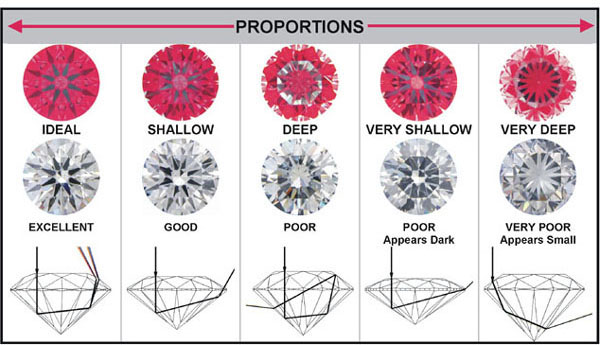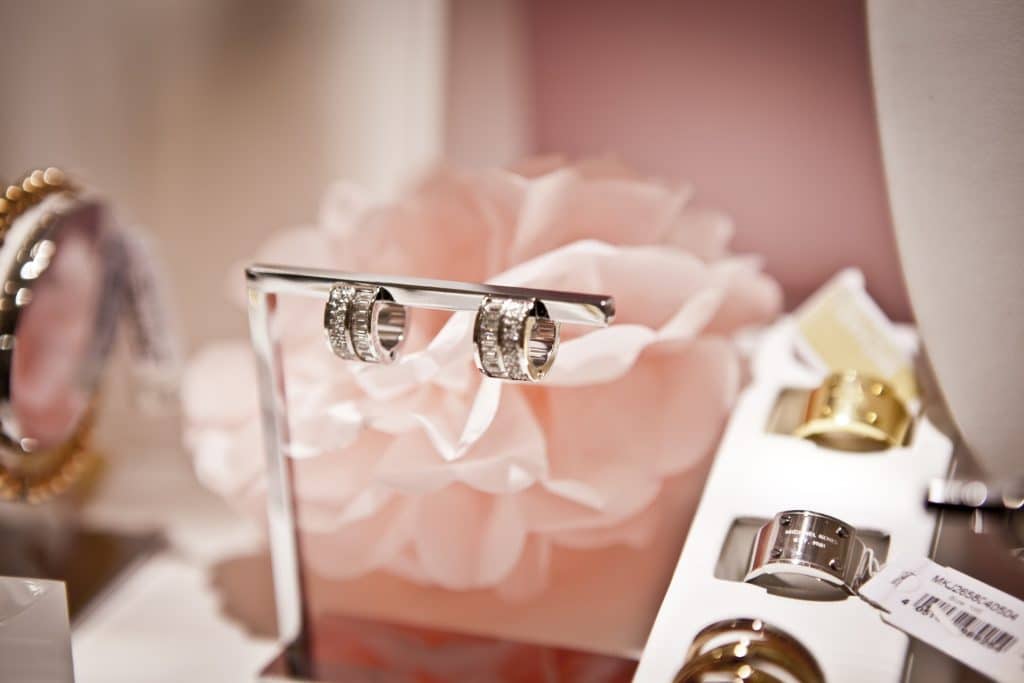If you’re like most people, the thought of buying diamonds can be overwhelming. Just as with any major purchase in life, you will need to do your research on all of the variables affecting quality and price. Fortunately, the process for buying diamonds isn’t as complicated or difficult as you might think and with some education, you will be able to visit a jewelry store with confidence.
The Seven Step Process: How to Buy Diamonds
There is an incredible amount of information out there for the consumer to sift through, and this can take weeks for someone starting out for the first time. To make it easy, here is an outline of everything you need to consider, including some insider tips to get you the most impressive stone for your money:
1. How to Buy Diamonds: Establish a budget
The decision to stick firmly to a budget is critical. Far too many people spend hundreds (or often thousands) beyond what they can really afford. Buying a diamond for an engagement ring is an emotional purchase– it is easy to get caught up in the moment, upgrade using a credit card and regret the financial consequences later.
2. How to Buy Diamonds: Determine carat weight
The greatest factor determining a diamond’s price is its carat weight, since the greater the weight (and therefore size), the more expensive the stone. It’s important to find out what your fiance-to-be has in mind to help you determine where to spend your budget. If she is set on a 1 carat stone, you will need to sacrifice other things such as clarity, cut, or color. If she may be happy with .50 carats, you can focus on higher clarity, or better cut and color. At least try to find out what her minimum expectations are and go from there. Try buying a diamond with weight slightly less than any half carat or full carat. There is a dramatic price difference between an exact half or full carat diamond and a diamond with slightly less weight. So, without any visible size difference, one can get relatively less expensive stone.
3. How to Buy Diamonds: What Kind of Shape?
Every woman has different style preferences. One may love the square look of a princess cut diamond, some may want a little more flair and lean towards unusual shapes, while others may simply want a classic round stone. It is important, therefore, to get an idea of what suits her tastes before making the purchase. The two most classic choices are round and square, with the round being the most popular among all brides-to-be. Round brilliant diamonds will cost a little more than other unique (“fancy”) shapes, so it is important to keep this in mind.
4. How to Buy Diamonds: Determine Cut
The quality of a diamond’s cut will have a significant impact on its price, and it is considered to be one of the most complicated aspects of the diamond buying process. Cutting quality can vary from jeweler to jeweler and the grades are not the same across the industry. Some jewelry stores have their own patented cut grading systems, which can make it confusing to compare between stores. The best way to compare apples to apples is to go by the grading certificate (cut grade) and not the individual jeweler’s methodology of diamond cutting and grades.

To give you a good baseline idea of what to look for, let’s take a round brilliant diamond. For GIA certified diamonds, you can get a beautiful round brilliant with a “very good” cut, and a noticeable improvement with an “excellent” cut (albeit more expensive). For AGS certified diamonds, an “excellent” graded cut is beautiful but if your budget allows, upgrade to an “ideal” for a noticeable difference. If she has her eye on a fancy shape, you may want to get a slightly better grade cut to ensure a fine level of brilliance and fire.
5. How to Buy Diamonds: Diamond Color
The color range for diamonds can depend on the color of the metal in the setting. Yellow gold has the advantage of absorbing some of the yellow hues found in the K-M color ranges, while a diamond closer to the colorless range would be best shown in a white gold, platinum or palladium setting.

Here are the minimum recommendations for choosing your diamond color:
1. Yellow gold settings:
Round Brilliant Cut: K-M
Asscher, Princess or Emerald Cuts: J-K
All other cuts: I-J
2. White gold, platinum or palladium settings:
Round Brilliant Cut: H-J
Asscher, Princess or Emerald Cuts: G-I
All other cuts: F-H
6. How to Buy Diamonds: Clarity grade options
A practical piece of advice for determining what kind of clarity grade to purchase is this: choose a diamond that is eye-clean. In other words, a diamond which looks beautiful to the naked eye is perfectly suitable and any higher clarity grades are not usually able to be enjoyed by the naked eye. No one carries around a jeweler’s loupe or magnifying glass and inspects others rings! Save your money and put it towards a better color grade, larger diamond or a high quality setting.
When viewing potential diamonds, naturally inspect them to look for dark spots. If you do find a flaw on the side of the diamond, have the jeweler use the prongs of the setting cover it up when the stone is being set. If buying the diamond from an online jewelry store, opt for those which offer virtual jewelers loupes or actual pictures of the ring with detailed close-ups. Most of these stores offer a 15-30 day refund policy which make it easy to view in the comfort of your own home and under different lighting.
7. How to Buy Diamonds: Fluorescence and Polish
Although these factors are not as significant as the aforementioned parts of the diamond buying process, it is still wise to be aware of the terminology and what to be aware of when inspecting diamonds.
Fluorescence: A diamond’s fluorescence is essentially the way the gem reflects UV light. This is nearly imperceptible to the average person, but a general rule of thumb is that diamonds with strong/very strong blue fluorescence will appear hazy or milky. Please note that the AGS and AIG have reported that a light medium blue fluorescence can improve the color of a diamond.
Polish: This refers to how smooth the diamond has been polished after being cut. There is very little research which suggests this is a determining factor in the quality of a diamond. It is only mentioned in this article to help the consumer avoid needlessly paying for “excellent” or “very good” polished diamonds when a simple “good” polish is sufficient.








